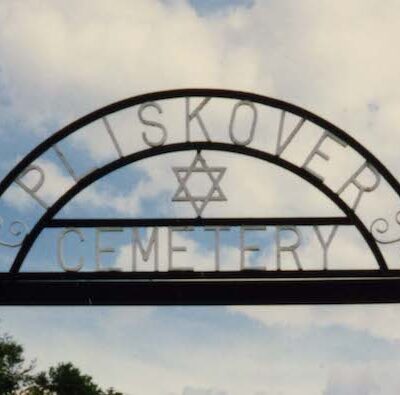
The Pliskover Free Loan Association was a landsmanshaft and mutual aid organization created by Jewish immigrants to Pittsburgh from the town of Pliskov, in present day Ukraine. Lazar and Chana Rubenstein are generally through to be the first residents of Pliskov to arrive in Pittsburgh and were responsible for helping to establish their family members and their fellow Pliskovers who immigrated to Pittsburgh. The first meeting of the Pliskover Free Loan Association was held at their home at 1609 Webster Ave. in the Hill District on August 23, 1908.[1]The thirtieth anniversary jubilee book of the Pliskover Free Loan Association. Pittsburgh: The Association, 1938 (online—Historic Pittsburgh). The organization was incorporated in January 1911.[2]Pliskower Free Loan Association charter, 1911, Allegheny County Charter Book, Vol. 45, Pages 416-417.
The Pliskover Free Loan Association raised funds to support its members and also to donate to Jewish causes throughout the region and beyond. The organization contributed to a local stogiemakers’ strike in 1913 and a cloakmakers strike in New York in 1913. It sent two delegates to the American Jewish Congress in 1916 and 1917. It raised funds to support war sufferers in Europe during World War I and to support Zionist causes.[3]The thirtieth anniversary jubilee book of the Pliskover Free Loan Association. Pittsburgh: The Association, 1938 (online—Historic Pittsburgh)
Although not primarily a religious organization, the Pliskover Free Loan Association commissioned the creation of a Torah scroll in 1913. In the absence of a local Pliskover congregation, the scroll was kept for many years at Tiphereth Israel Congregation. The Pliskover Free Loan Association purchased cemetery property in Kennedy Township from Ahavath Achim Congregation (McKees Rocks, Pa.) in 1916, commissioned a chapel at the property in the early 1920s, and added an iron gate in the mid-1930s.[4]The thirtieth anniversary jubilee book of the Pliskover Free Loan Association. Pittsburgh: The Association, 1938 (online—Historic Pittsburgh) The chapel was remodeled in 1941 to include electricity, running water, and phone service.[5]The fortieth anniversary book of the Pliskov Free Loan Association. Pittsburgh : the Association, 1948 (online—Historic Pittsburgh).
The Pliskover Free Loan Association Ladies Auxiliary was created in November 1929 after many years of failed attempts. It was responsible for many fundraising and social activities for the group, including funds to support Jewish people still living in Pliskov. A Junior Pliskover Club was created in 1934 at the Irene Kaufmann Settlement House to encourage young Jewish men between 17 and 24 into participating in the organization.
The Pliskover Free Loan Association was the longest lasting landsmanshaft in Western Pennsylvania and was continuing to meet into the second decade of the 21st century.[6]Pliskover Association (online—Pliskover Association website).
References
| ↑1 | The thirtieth anniversary jubilee book of the Pliskover Free Loan Association. Pittsburgh: The Association, 1938 (online—Historic Pittsburgh). |
|---|---|
| ↑2 | Pliskower Free Loan Association charter, 1911, Allegheny County Charter Book, Vol. 45, Pages 416-417. |
| ↑3, ↑4 | The thirtieth anniversary jubilee book of the Pliskover Free Loan Association. Pittsburgh: The Association, 1938 (online—Historic Pittsburgh |
| ↑5 | The fortieth anniversary book of the Pliskov Free Loan Association. Pittsburgh : the Association, 1948 (online—Historic Pittsburgh). |
| ↑6 | Pliskover Association (online—Pliskover Association website). |